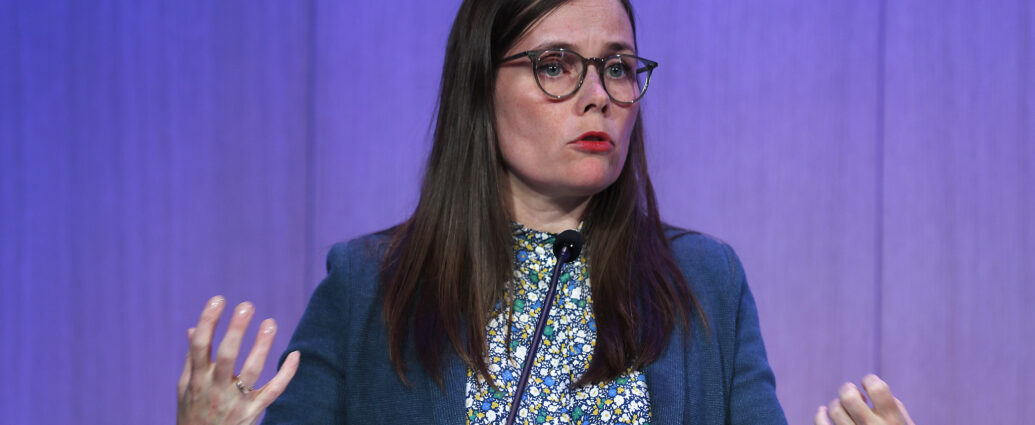Content warning: This article contains mention of sexual assault.
Nora Redmond
Approximately 100,000 women and non-binary people, including Iceland’s prime minister, went on strike over unequal pay and violence against women on Tuesday 14th October.
Why did women in Iceland strike?
Disparities in pay and the increasing violence against women in Iceland saw thousands of women across the country go on strike last month.
Statistics Iceland reports that the gender pay gap was 10.2 per cent in 2021. The disparity expands for certain occupational groups, especially those traditionally occupied by men.
It rises to 29.7 per cent for women who work in finance and insurance. Across the private sector, the unadjusted gender pay gap was 13.9 per cent.
Additionally, significantly more women have lower-paying jobs while proportionally more men are in the higher wage category. This is partially due to men on average working more overtime than women, but mainly because of gender segregation in the labour market.
The gender pay gap also widens with age in Iceland. It stands at 0.9 per cent for employees under the age of 25 and 16.7 per cent for workers aged 55-64 years old.
Women took strike action to draw attention to gender-based violence as well, which continues to be a widespread issue in the country.
In 2018, the University of Iceland found that one in four women had been raped or subjected to sexual violence in their lifetimes. The same percentage of women had been victims of physical violence.
What is the significance of the strike?
The walkout was the largest since 1975, when 25,000 women descended on Reykjavík city centre to campaign for gender equality.
This represented 90 per cent of the female population of Iceland at the time.
Similarly, women objected to work, cooking, and child-care on that same day. October 24th 1975 became known as Women’s Day Off, or Kvennafrí in the Icelandic.
Following the strike, the feminist political party, the Women’s Alliance or Women’s List, was established and the world’s first female president was elected in November 1980.
Vigdís Finnbogadottir, who held the position of Iceland’s president for 16 years, is adamant that she would not have assumed the post if it were not for the women who rallied for their rights.
Finnbogadottir said the strike was “the first step for women’s emancipation in Iceland.”
This is what 100,000 people striking for gender equality and an end to gendered violence looks like.
On October 24, an estimated 100,000 women and non-binary people staged a one-day strike in Iceland — including the country's prime minister, Katrín Jakobsdóttir. pic.twitter.com/SbcueWFVBQ
— NowThis (@nowthisnews) October 26, 2023
48 years later, the biggest crowd Iceland has ever seen was protesting for gender equality. Strike organisers suggested many of the demands of the 1975 walkout are yet to be met.
Some schools and libraries did not open during the strikes. Medical clinics in the capital city only treated emergencies for the duration of the protest.
“We have not yet reached our goals of full gender equality.”
Icelandic prime minister, Katrín Jakobsdóttir, was joined by the female employees who make up two-thirds of her office in the strike in Reykjavík.
Jakobsdóttir said to Iceland Monitor: “We have not yet reached our goals of full gender equality and we are still tackling the gender-based wage gap, which is unacceptable in 2023.”
The World Economic Forum has ranked Iceland as the world’s most gender equal country for 14 years consistently.
But this week, thousands of women took part in a strike to protest unequal pay and gender-based violence. pic.twitter.com/3sOG9AurRE
— Human Rights Watch (@hrw) October 29, 2023
The prime minister has announced that her government will examine how professions dominated by women are valued in comparison to industries which are traditionally over-represented by men.
How does Iceland’s gender pay gap compare to other countries?
Iceland has been ranked as the best country globally for gender parity by the World Economic Forum (WEF) for 14 years in a row.
The country has an overall score of 91.2 per cent. This makes Iceland the only country to have closed over 90 per cent of its gender gap.
“…there are still gender disparities and urgent need for action.”
Norway, Finland, New Zealand and Sweden follow in order as the remainder of the top five.
Yet the WEF points out that no country is yet to achieve full gender equality.
Protest organiser and communications director for Icelandic Federation for Public Workers, Freyja Steingrimsdottir, spoke on the strikes. She told Reuters: “We’re called an equality paradise, but there are still gender disparities and urgent need for action.”
READ NEXT:
-
EMPOWORD EXPLAINS: ISRAEL-PALESTINE CONFLICT
-
MALE REDEMPTION ARC: WHY HOLLYWOOD FORGIVES ABUSIVE MEN
-
ABORTION SERVICES BUFFER ZONE BILL PUBLISHED IN SCOTLAND
Featured image courtesy of Statsministerens kontor via Flickr. No changes were made to this image. Image license found here.

